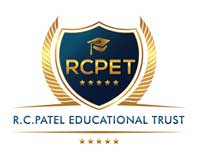Infrastructure and Facilities
The infrastructure and facilities of the History department are essential for creating a conducive learning environment and supporting academic and research activities. Here are some key aspects of infrastructure and facilities typically found in a History department:
1. Classrooms and Lecture Halls
Well-equipped classrooms and lecture halls with audio-visual aids such as projectors, screens, and whiteboards facilitate effective teaching and learning.
2. Library and Resource Centre
A specialized library containing a wide range of historical books, journals, periodicals, and digital resources is crucial for supporting research and study in history. Access to online databases and archives further enhances the availability of historical materials.
3. Archives and Special Collections
Access to archival materials, rare manuscripts, documents, and artefacts provides students and faculty with opportunities for original research and primary source analysis.
4. Computer Labs and Technology Resources
Computer labs equipped with internet access and relevant software support digital research, data analysis, and multimedia projects. Technology resources like scanners, printers, and audio-visual equipment aid in creating digital presentations and projects.
5. Seminar Rooms and Discussion Spaces
Dedicated seminar rooms and discussion spaces facilitate small group discussions, collaborative projects, and interactive learning activities.
6. Museum or Exhibition Space
A museum or exhibition space within the department can showcase historical artefacts, displays, and exhibitions, providing hands-on learning experiences for students and engaging the wider community.
7. Research Centres and Institutes
Research centres or institutes focused on specific historical periods, themes, or methodologies provide a platform for interdisciplinary collaboration, advanced research, and scholarly exchange.
8. Accessibility Features
Infrastructure should be accessible to all individuals, including those with disabilities, with features such as ramps, elevators, and accessible restrooms.
9. Cafeteria and Refreshment Facilities
On-campus cafeterias or refreshment areas provide students and faculty with convenient dining options and spaces for socializing and relaxation.
10. Safety and Security Measures
Safety and security measures, including surveillance cameras, emergency exits, and campus security personnel, ensure the well-being of students, faculty, and staff.
These infrastructure and facilities are essential for fostering a vibrant academic community, promoting scholarly excellence, and facilitating the study and preservation of history.





